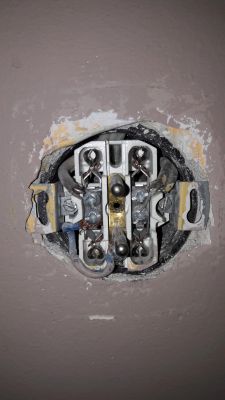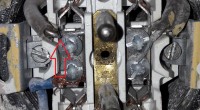Adam-T wrote: Plumpi wrote: Clamp the cable sleeves on them.
What sleeves does the colleague mean? ?
Plumpi wrote: We connect the blue and yellow-green wires to the neutral wire
Such distribution is only in the switchgear, not in the socket. Like a pointer, someone wrote N to the "pin" and then the bridge to the socket contact.
zadam64 wrote: Connection in the same way as in the old socket.
Unfortunately, no, the N-ka in the old socket is incorrectly connected.
And where is the customer to take the third cable in the installation from the times of the Polish People's Republic ui is yellow-green, it would be good in copper?
Added after 4 [minutes]: Plumpi wrote: Adam-T wrote: Plumpi wrote: Clamp the cable sleeves on them.
What sleeves does the colleague mean? ?
The most common ferrules for crimping stranded wires.
https://dlaelektrykow.pl/10610-thickbox_defau...lejkowa-nieizolowana-ntn-610-100-szt-next.jpg I have been using this patent for aluminum conductors for many years. The connections that I made almost 20 years ago work without any problems to this day.
Plumpi wrote: We connect the blue and yellow-green wires to the neutral wire
Such distribution is only in the switchgear, not in the socket. Like a pointer, someone wrote N to the "pin" and then the bridge to the socket contact.
The method that I have described provides a much better galvanic connection of the protective pin with the neutral wire, and also protects the contact of the protective pin against overheating due to the flow of the operating current N.
If you want to connect this way, the wire must be continuous between PE and N. Unfortunately, in the majority of currently produced sockets it is not possible to screw the wire loop to the PE terminal so that the wire is connected to the N while maintaining continuity. Since in new equipment PE terminals are often more delicate than active conductor terminals, and it is often impossible to connect a wire loop while maintaining its continuity, it is wiser to perform the zeroing as described. [/ Quote]
Carve an eyelet for continuity on aluminum that is about 50 years old? Good luck.





